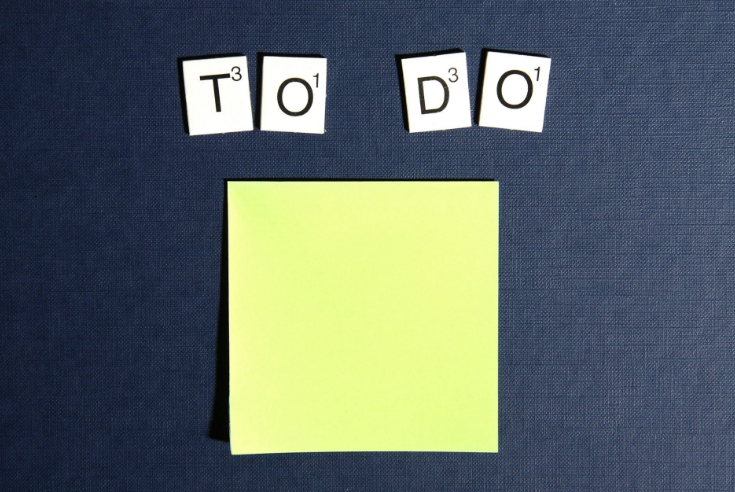The Role of Digital Content Libraries in Content Repurposing and Longevity
In the ever-evolving world of digital marketing, content is king. However, creating high-quality content takes time and resources, making it essential for brands to maximize their content’s value. This is where digital content libraries come into play. Not only do they serve as centralized repositories for assets, but they also facilitate content repurposing. In this article, we’ll explore the significant role digital content libraries play in content repurposing and how they contribute to the longevity of your brand’s message.
Understanding Digital Content Libraries

A digital content library, such as audio and ebooks All You Can Books, is a centralized storage system that houses all types of digital assets, including articles, images, videos, infographics, presentations, and more. This organized repository makes it easy for teams to access and manage content efficiently, ensuring that everyone can find and utilize the materials they need.
The Importance of Content Repurposing
Content repurposing is the practice of taking existing content and adapting it for new formats or audiences. This strategy offers numerous benefits:
- Maximized Reach: By repackaging content, you can reach different audience segments who may prefer different formats. For example, a blog post can be transformed into a video, an infographic, or even a podcast episode.
- Increased Visibility: Search engines and social media platforms reward fresh content. Repurposing allows you to present your ideas in new ways, keeping them relevant and engaging.
- Efficiency: Creating new content from scratch can be time-consuming. Repurposing allows you to leverage your existing assets, saving time while still producing high-quality output.
- Reinforced Messaging: Sharing the same message through various formats reinforces your brand’s core themes, making it more memorable for your audience.
How Digital Content Libraries Facilitate Content Repurposing
Digital content libraries play a pivotal role in making content repurposing efficient and effective. Here’s how:
Centralized Access
With a digital content library, all your assets are stored in one place, making it easy to locate and access existing content. This centralized approach reduces the time spent searching for materials, allowing your team to focus on creative repurposing rather than hunting for files.
Organized Structure
An organized digital content library makes it easy to categorize and tag assets based on themes, formats, or target audiences. This systematic approach ensures that your team can quickly identify relevant content that can be repurposed for different platforms or campaigns.
Version Control
Maintaining different versions of a piece of content can be challenging. Digital content libraries often come equipped with version control features, allowing your team to track changes, revert to previous versions, and ensure they’re using the most up-to-date content. This functionality is crucial when repurposing content, as it helps maintain consistency and quality.
Collaboration Tools

Many digital content libraries offer collaboration features that enable team members to work together on repurposing projects. By allowing multiple users to comment, edit, and contribute, these libraries foster a collaborative environment where ideas can flow freely, resulting in more creative and diverse content outputs.
Analytics and Insights
Understanding how your content performs is vital for effective repurposing. Digital content libraries often include analytics tools that provide insights into which assets are most popular, how often they’re accessed, and what formats resonate with your audience. This data can inform your repurposing strategy, allowing you to focus on the content that drives engagement.
In the fast-paced world of digital marketing, leveraging a digital content library can significantly enhance your content strategy. By facilitating content repurposing and extending the longevity of your assets, these libraries help brands maximize their content’s value. With centralized access, organized structures, collaboration tools, and analytics, digital content libraries empower teams to create dynamic and engaging content that resonates with diverse audiences.…








 Brand building is the foundation of your business’s identity. It goes beyond just a logo or color scheme—it encompasses the values, mission, and voice that set you apart from competitors. When you invest time and resources into solidifying your brand, you create a lasting impression on your target audience. Consistency is key in brand building. Every touchpoint should reflect your brand’s personality and messaging, from your website to your social media presence to customer interactions. This coherence builds customer trust and loyalty while establishing credibility in your industry. A strong brand not only attracts customers but also retains them.
Brand building is the foundation of your business’s identity. It goes beyond just a logo or color scheme—it encompasses the values, mission, and voice that set you apart from competitors. When you invest time and resources into solidifying your brand, you create a lasting impression on your target audience. Consistency is key in brand building. Every touchpoint should reflect your brand’s personality and messaging, from your website to your social media presence to customer interactions. This coherence builds customer trust and loyalty while establishing credibility in your industry. A strong brand not only attracts customers but also retains them. Risk mitigation is a critical aspect of any successful marketing plan. It involves identifying potential risks impacting the plan’s effectiveness and developing strategies to address them proactively. By anticipating and preparing for possible challenges, businesses can minimize the negative impact on their marketing efforts. One common risk in marketing is overspending without achieving the desired results. Setting clear budgetary limits and regularly monitoring expenses to mitigate this risk can help prevent unnecessary financial losses.
Risk mitigation is a critical aspect of any successful marketing plan. It involves identifying potential risks impacting the plan’s effectiveness and developing strategies to address them proactively. By anticipating and preparing for possible challenges, businesses can minimize the negative impact on their marketing efforts. One common risk in marketing is overspending without achieving the desired results. Setting clear budgetary limits and regularly monitoring expenses to mitigate this risk can help prevent unnecessary financial losses.






 Before embarking on your raw vegan pregnancy journey, schedule a preconception checkup with a healthcare provider who understands your dietary choices. This visit can help you address any existing health concerns and prepare for a healthy pregnancy. Your provider can also offer specific guidance on optimizing your diet and supplementation to support a healthy pregnancy and help prevent possible deficiencies.
Before embarking on your raw vegan pregnancy journey, schedule a preconception checkup with a healthcare provider who understands your dietary choices. This visit can help you address any existing health concerns and prepare for a healthy pregnancy. Your provider can also offer specific guidance on optimizing your diet and supplementation to support a healthy pregnancy and help prevent possible deficiencies.
 As with any pregnancy, there may be concerns or challenges that arise along the way. It’s important to regularly communicate with your healthcare provider about any changes or concerns you may have regarding your health or the health of your baby. This open communication allows your provider to monitor and address any potential issues before they become serious problems.
As with any pregnancy, there may be concerns or challenges that arise along the way. It’s important to regularly communicate with your healthcare provider about any changes or concerns you may have regarding your health or the health of your baby. This open communication allows your provider to monitor and address any potential issues before they become serious problems.


 Providing proper training and development opportunities for employees is critical to ensure your bar or restaurant business runs smoothly. Investing in employee development helps them feel valued and increases confidence in their abilities. Cross-training is an excellent way to rotate employees through various tasks and positions, ensuring a well-rounded skill set throughout the team. A well-trained team can handle any situation, providing exceptional customer service and improving efficiency.
Providing proper training and development opportunities for employees is critical to ensure your bar or restaurant business runs smoothly. Investing in employee development helps them feel valued and increases confidence in their abilities. Cross-training is an excellent way to rotate employees through various tasks and positions, ensuring a well-rounded skill set throughout the team. A well-trained team can handle any situation, providing exceptional customer service and improving efficiency. Positive reinforcement is a powerful tool for managers to boost morale and motivation in their team. Recognizing and rewarding the successes of individual employees and teams can foster a sense of accomplishment and encourage working towards common goals. Recognizing employee achievements may include simple gestures such as verbal praise, an employee of the month programs, bonuses, or opportunities for career advancement. Celebrating accomplishments creates a positive work environment that promotes teamwork and productivity.
Positive reinforcement is a powerful tool for managers to boost morale and motivation in their team. Recognizing and rewarding the successes of individual employees and teams can foster a sense of accomplishment and encourage working towards common goals. Recognizing employee achievements may include simple gestures such as verbal praise, an employee of the month programs, bonuses, or opportunities for career advancement. Celebrating accomplishments creates a positive work environment that promotes teamwork and productivity.
 Reflection is an essential part of personal growth that requires looking inward and examining our thoughts, feelings, and experiences. It’s easy to get caught up in the hustle and bustle of daily life, but pausing to reflect can provide clarity and direction. Reflecting on our past experiences allows us to learn from them and make better choices. It’s also an opportunity to acknowledge areas where we need improvement or change.
Reflection is an essential part of personal growth that requires looking inward and examining our thoughts, feelings, and experiences. It’s easy to get caught up in the hustle and bustle of daily life, but pausing to reflect can provide clarity and direction. Reflecting on our past experiences allows us to learn from them and make better choices. It’s also an opportunity to acknowledge areas where we need improvement or change. Personal growth is a continuous journey of self-discovery and improvement according to life
Personal growth is a continuous journey of self-discovery and improvement according to life 


 Gifting is an excellent way for businesses to show gratitude and appreciation for their customers, employees, partners, and suppliers. It doesn’t have to be expensive or time-consuming; even a small token of appreciation can have a lasting impact. Gifting is an excellent way to show your customers that you value them, whether given out on special occasions such as holidays, anniversaries, or birthdays or as a reward for loyalty and long service.
Gifting is an excellent way for businesses to show gratitude and appreciation for their customers, employees, partners, and suppliers. It doesn’t have to be expensive or time-consuming; even a small token of appreciation can have a lasting impact. Gifting is an excellent way to show your customers that you value them, whether given out on special occasions such as holidays, anniversaries, or birthdays or as a reward for loyalty and long service. Gifting can be an incredibly effective tool for businesses looking to increase customer engagement, build relationships and strengthen brand recognition. With the right gifts, companies can show appreciation for their customers and employees and build relationships that will last for years. Gifting is a great investment in customer loyalty and business profits.…
Gifting can be an incredibly effective tool for businesses looking to increase customer engagement, build relationships and strengthen brand recognition. With the right gifts, companies can show appreciation for their customers and employees and build relationships that will last for years. Gifting is a great investment in customer loyalty and business profits.…

 The automotive industry is also a great way to help the environment. This is because many businesses in this industry are focused on developing new technologies that will make cars more efficient and reduce emissions. This is good for the environment, and it is also good for business.
The automotive industry is also a great way to help the environment. This is because many businesses in this industry are focused on developing new technologies that will make cars more efficient and reduce emissions. This is good for the environment, and it is also good for business.

 Teachers have high expectations for their students, and they believe that every child has the potential to succeed. They push their students to be the best they can be and provide the support and resources needed to help them reach their goals. They want their students to succeed in life and do everything they can to help make that happen. Teachers are some of the most influential people in our lives.
Teachers have high expectations for their students, and they believe that every child has the potential to succeed. They push their students to be the best they can be and provide the support and resources needed to help them reach their goals. They want their students to succeed in life and do everything they can to help make that happen. Teachers are some of the most influential people in our lives.
 The first step to attracting customers is to grow your brand. You need to ensure that people know your business and what you do. If you want to
The first step to attracting customers is to grow your brand. You need to ensure that people know your business and what you do. If you want to  The fourth step to attracting customers is to develop a marketing strategy. You need to make sure that you are reaching your target audience with your marketing efforts. If you’re unsure how to do this, plenty of resources are available to help you. You can also hire a marketing firm to help you develop and implement a successful marketing strategy. This is how big companies attract customers on a large scale.
The fourth step to attracting customers is to develop a marketing strategy. You need to make sure that you are reaching your target audience with your marketing efforts. If you’re unsure how to do this, plenty of resources are available to help you. You can also hire a marketing firm to help you develop and implement a successful marketing strategy. This is how big companies attract customers on a large scale.


 One of the biggest reasons to hire a professional dog trainer is because they have the experience. They know what methods work and which ones don’t, and they can help you troubleshoot any problems you may be having with your dog’s behavior. This is very important because, as we all know, dogs don’t come with a manual. It’s helpful to have someone who can guide you through the process and offer advice when you need it. In fact, wealthy people find the services of a professional dog trainer worth the investment.
One of the biggest reasons to hire a professional dog trainer is because they have the experience. They know what methods work and which ones don’t, and they can help you troubleshoot any problems you may be having with your dog’s behavior. This is very important because, as we all know, dogs don’t come with a manual. It’s helpful to have someone who can guide you through the process and offer advice when you need it. In fact, wealthy people find the services of a professional dog trainer worth the investment. Dogs aren’t always easy to train, and it’s not uncommon to get frustrated. A professional trainer can help you avoid frustration by teaching you how to effectively communicate with your dog and use positive reinforcement techniques. Some dogs are quite stubborn when it comes to training, but a professional trainer knows how to deal with that. In fact, they live for a challenge. They can help you and your dog bond while also teaching your dog the skills they need to be a well-behaved pup.
Dogs aren’t always easy to train, and it’s not uncommon to get frustrated. A professional trainer can help you avoid frustration by teaching you how to effectively communicate with your dog and use positive reinforcement techniques. Some dogs are quite stubborn when it comes to training, but a professional trainer knows how to deal with that. In fact, they live for a challenge. They can help you and your dog bond while also teaching your dog the skills they need to be a well-behaved pup.
 Poker starts with the basic premise of five cards. From there, players take turns betting, raising, and folding to try and put together the best possible hand.
Poker starts with the basic premise of five cards. From there, players take turns betting, raising, and folding to try and put together the best possible hand. Odds of Winning – This is simply the percentage of times you will win the hand if you make the best possible move. To calculate this, you need to know what cards are left in the deck and how likely they will help you win.
Odds of Winning – This is simply the percentage of times you will win the hand if you make the best possible move. To calculate this, you need to know what cards are left in the deck and how likely they will help you win.
 When packing for your RV trip, it’s essential to pack light. It is because you will be limited on space once you start traveling. So, make sure to only bring the essentials with you. It includes things like clothes, toiletries, and food.
When packing for your RV trip, it’s essential to pack light. It is because you will be limited on space once you start traveling. So, make sure to only bring the essentials with you. It includes things like clothes, toiletries, and food. One way to keep everyone entertained on your RV trip is to bring games with you. It could include things like cards or board games. It will help keep everyone busy and engaged while they are traveling. So, make sure to pack some games that everyone in your family can enjoy playing together. Some people may think that being on the road is boring. So, it’s better to play some games while on the road. This way, it will help make the trip more fun and exciting while traveling together.
One way to keep everyone entertained on your RV trip is to bring games with you. It could include things like cards or board games. It will help keep everyone busy and engaged while they are traveling. So, make sure to pack some games that everyone in your family can enjoy playing together. Some people may think that being on the road is boring. So, it’s better to play some games while on the road. This way, it will help make the trip more fun and exciting while traveling together.

 Domain registration can be a very lucrative business. Speculators are always on the lookout for new trends and technologies. Trends and technologies are constantly changing. Markets are watched closely and are likely to go up in short periods. To make huge profits, it’s wise to register expired domain names relevant to new technologies, markets, and trends. You can also buy domain names that have already expired and redirect targeted traffic. By simply typing keyword-rich domain names into the address bar and then hitting enter, you can quickly get domains that help you attract visitors.
Domain registration can be a very lucrative business. Speculators are always on the lookout for new trends and technologies. Trends and technologies are constantly changing. Markets are watched closely and are likely to go up in short periods. To make huge profits, it’s wise to register expired domain names relevant to new technologies, markets, and trends. You can also buy domain names that have already expired and redirect targeted traffic. By simply typing keyword-rich domain names into the address bar and then hitting enter, you can quickly get domains that help you attract visitors.
 Attitude determines whether you pay too little or too much on the road. You will automatically believe that camping, gas, and food are expensive. You will pay less if you are determined to work as hard as possible.
Attitude determines whether you pay too little or too much on the road. You will automatically believe that camping, gas, and food are expensive. You will pay less if you are determined to work as hard as possible.
 This nail is one of the most sought-after nails on the market. Quartz nails can retain the maximum amount of flavor in their concentrates and heat up in seconds. Quartz nails can be purchased in a variety of sizes and styles to fit any device.
This nail is one of the most sought-after nails on the market. Quartz nails can retain the maximum amount of flavor in their concentrates and heat up in seconds. Quartz nails can be purchased in a variety of sizes and styles to fit any device. Ceramic nails taste good and have excellent heat retention. They take about 30 seconds to heat up well. Ceramic doesn’t glow orange like quartz or titanium, so it’s hard to tell if the nail is getting too hot. Because it is chemically inert, the ceramic used for enamel is safe for food and medical use. Ceramic does not need to be cured because it is a non-porous substance.
Ceramic nails taste good and have excellent heat retention. They take about 30 seconds to heat up well. Ceramic doesn’t glow orange like quartz or titanium, so it’s hard to tell if the nail is getting too hot. Because it is chemically inert, the ceramic used for enamel is safe for food and medical use. Ceramic does not need to be cured because it is a non-porous substance.
 Evaluate whether you may require hardness testing equipment, drilling tools, tips, and several different individuals before contacting several providers to make certain you know exactly what you would like in the company you wish to utilize. After determining the tools, you may need, start browsing the internet for businesses offering
Evaluate whether you may require hardness testing equipment, drilling tools, tips, and several different individuals before contacting several providers to make certain you know exactly what you would like in the company you wish to utilize. After determining the tools, you may need, start browsing the internet for businesses offering 
 File a Transfer Report
File a Transfer Report Gifts, bequests, and inheritances fall under this heading, so remember that if your grandfather gives you, you’ll need to file a transfer report. And handle it with care. Take a gun permit practice test to see if you’re well prepared to protect yourself. The Bay Area Firearms Training Group was founded in 2002 to provide excellent training to promote responsible civilian gun ownership/handling. Once the waiting period has passed and it has been determined that you are not a felon or a victim of mental illness, you can go ahead and pick up your firearm.…
Gifts, bequests, and inheritances fall under this heading, so remember that if your grandfather gives you, you’ll need to file a transfer report. And handle it with care. Take a gun permit practice test to see if you’re well prepared to protect yourself. The Bay Area Firearms Training Group was founded in 2002 to provide excellent training to promote responsible civilian gun ownership/handling. Once the waiting period has passed and it has been determined that you are not a felon or a victim of mental illness, you can go ahead and pick up your firearm.…
 Your website is a marketing tool to find site users to request more information, buy a product, download an app, make a reservation (or maybe the only 100 variations you’ve won in your business). You need to introduce a clear call to action so that your website visitors don’t abandon your site and put your business in competition.
Your website is a marketing tool to find site users to request more information, buy a product, download an app, make a reservation (or maybe the only 100 variations you’ve won in your business). You need to introduce a clear call to action so that your website visitors don’t abandon your site and put your business in competition.  You want to make sure your host reaches a stable data center with multiple options for backups of your website. Additionally, it’s a good idea to maintain a regional copy of your website as well. One of the dangers of growing a DIY website, or allowing an amateur to build your website, is that many security holes can be added to your website. SEO is about making sure you have the perfect content on your website, using the perfect keyword phrases and in an excellent order to get the best results. SEO also takes place outside of your website.
You want to make sure your host reaches a stable data center with multiple options for backups of your website. Additionally, it’s a good idea to maintain a regional copy of your website as well. One of the dangers of growing a DIY website, or allowing an amateur to build your website, is that many security holes can be added to your website. SEO is about making sure you have the perfect content on your website, using the perfect keyword phrases and in an excellent order to get the best results. SEO also takes place outside of your website.

 Another practical option for the street is the strappy flat. If you have narrow feet or are worried about slipping, strappy shoes will ensure a proper fit. Just be sure to choose a pair that isn’t too tight. For this, it’s a good idea to look for shoes with adjustable Velcro straps. This will allow you to adjust the fit quickly and effortlessly. Also, look for floors that only have a thick and comfortable sole. Trust me, your toes will thank you.
Another practical option for the street is the strappy flat. If you have narrow feet or are worried about slipping, strappy shoes will ensure a proper fit. Just be sure to choose a pair that isn’t too tight. For this, it’s a good idea to look for shoes with adjustable Velcro straps. This will allow you to adjust the fit quickly and effortlessly. Also, look for floors that only have a thick and comfortable sole. Trust me, your toes will thank you.

 This tip is probably the most straightforward thing on the list. When you take your tiles, arrange them in the same way. This method can allow you to spot common problems and repetitions behind the scenes, and after enough moves, you’ll start to see common 6-letter phrases that you’ve seen before. As for me, I sort my tiles alphabetically after collecting them.
This tip is probably the most straightforward thing on the list. When you take your tiles, arrange them in the same way. This method can allow you to spot common problems and repetitions behind the scenes, and after enough moves, you’ll start to see common 6-letter phrases that you’ve seen before. As for me, I sort my tiles alphabetically after collecting them.